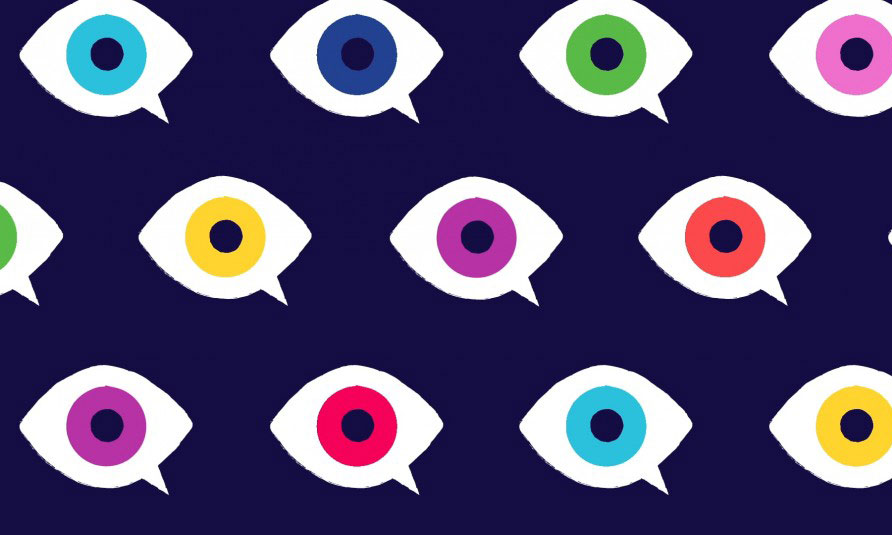
Advocacy Through Emoji
With its latest advocacy campaign, the Ad Council and its many partners have learned to speak emoji. The goal of the I Am a Witness campaign? To bring attention to and discourage bullying in all forms.
With its latest advocacy campaign, the Ad Council and its many partners have learned to speak emoji. The goal of the I Am a Witness campaign? To bring attention to and discourage bullying in all forms.
If you could invent your own emoji, what would it look like?
The Ad Council recently had a chance to answer this call, and the result is hard to look away from.
That’s because it comes in the form of a giant eyeball inside of a speech bubble. What’s that supposed to do? Well, that wasn’t necessarily clear at first among those who closely watch the latest happenings in the emoji space (and, yes, there are people who do that), who saw that the icon was being added to the latest version of Apple’s iOS.
“Nobody knows what it is, or why it exists,” Emojipedia founder Jeremy Burge wrote in a blog post.
The truth behind the I Am a Witness symbol, which was revealed on Thursday, is this: It’s a symbol for cyberbullying—one designed to encourage children to take advantage of an already popular communication medium to speak up. The emoji is designed to solve an issue often facing witnesses of bullying incidents: What are you supposed to say when confronted with a bullying incident, and how do you show solidarity with a victim without making yourself a target?
The striking eye imagery is a pretty good way to get that point across, argues Ad Council President and CEO Lisa Sherman.
“All teens are impacted by bullying and they often feel helpless when they witness it. Emojis have become a second language for teens, and they provide a relevant and easy way to get involved,” Sherman said in a news release.
The Ad Council worked with a number of major tech firms on the emoji campaign: Adobe, which spearheaded the idea through its chief marketing officer, Ann Lewnes, an anti-bullying advocate; social networks such as YouTube, Facebook, Snapchat, and Twitter, which are promoting use of the hashtag #IAmAWitness; and Apple, which agreed to fast-track the emoji to the latest version of iOS to encourage its use.
(Apple’s decision to add the icon on its own accord was admittedly controversial among some, such as Burge, who saw the icon—which was created by Apple using a bit of a hack—as messing with the standards-driven process for adding new emoji, though he admitted the campaign itself was “a noble cause.”)
Also helping on the nonprofit front are The Bully Project, The Trevor Project, the Gay, Lesbian & Straight Education Network (GLSEN), and PACER’s National Bullying Prevention Center.
Why This Strategy Works
As an ad strategy, it’s totally original—and it sets an important psychological precedent. Instead of focusing on the bullies or the bullied, it emphasizes those who often have the most control in these situations: the bystanders.
Hanna Wittmark and Patrick Knowlton of the ad agency Goodby, Silverstein & Partners, who came up with the visual image, reportedly went through hundreds of treatments before coming up with the visually direct image combining the eye and the speech bubble.
“[W]e realized an eye alone was too passive,” Wittmark told Wired. “We wanted that active state, which is how we settled on the eye inside a speech bubble.”
The result evokes a simple psychological point: We’re more likely to correct our actions when we know we’re being watched.
Of course, now that the icon is out in the world, there’s always a chance that its message could get lost as the emoji gets in the hands of its target audience. Which is a big part of the reason the new emoji is getting some additional support from a more traditional ad campaign, one featuring YouTube stars such as Grace Helbig, Ricky Dillon, and Trevor Moran reading some of the mean comments they’ve received over the years. (And, it being YouTube, odds are good that there’s far more where that came from.)
Another star of the video, motivational speaker Lizzie Velasquez, remained optimistic that the icon would not be used as a form of bullying itself.
“There’s a fine line between bullying them back and calling them out,” she told Mashable last week. “We don’t know what’s going on inside. They might be going through something really not good.”
For now, though, the message is in the hands of those who could benefit from using it the most. All eyes are on them.
(Goodby, Silverstein & Partners)






Comments